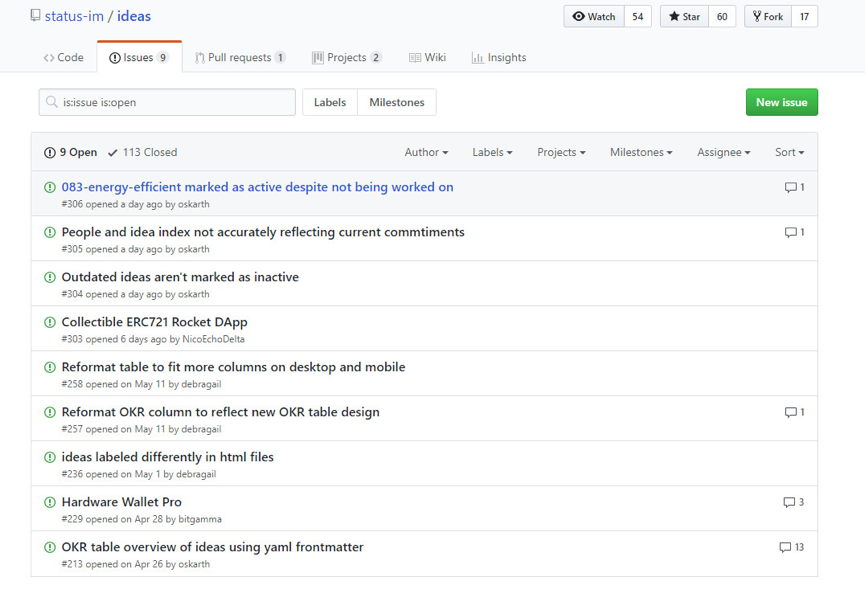Status (SNT) Review – The Mobile Gateway to the Ethereum Ecoystem
| Status Key Information | |
| Name | Status |
| Ticker | SNT |
| Total Supply | 6,804,870,174 |
| Initial Price | $0.05 |
| Category | Mobile Operating System |
| Website URL | Go to Status Website |
| White Paper URL | Go to Status WhitePaper |
Status is an open source mobile DApp browser built for Ethereum. It can be
thought of as the Google Play Store for Ethereum DApps. It also includes a
messaging app and a method for safely storing, receiving and sending Ether and
other ERC-20 tokens. This is all done using a decentralized peer-to-peer protocol
as opposed to the current system of using centralized servers.

The Idea Behind Status
Status is an open-source project built on top of Ethereum and designed to work with DApps that run on it. In Ethereum, users function as nodes/servers, with complete control of their own data. The product is currently available for public download in Android and iOS.
Traditionally, social networks have three different constituents: owners, advertisers, and users – each with different goals.
- Owners – These are usually the creator of the network (Google, Facebook, etc), whose main goal is to acquire and retain users. Algorithms are employed to do this at the expense of the user, often via manipulation of the user’s thoughts and feelings.
- Advertisers – The advertiser’s goal is to gain value from the network, either by accessing user data, lead acquisition or through purchasing advertising.
- Users – Users often access the network to connect socially, while possibly being exploited by owners and adveretisers, who may not be acting in their best interests.

Carl Bennets and Jarrad Hope are the co-founders of Status, having worked for 6 years on various projects, of which 3 were in joint work on a software distribution network. It was at this software distribution network that had over 20 million installs in which the two received in-depth experience on personal data and user acquisition and retention.
Status Partnerships
Status has a number of important strategic partnerships in the blockchain space.
In December 2017, Status announced it would be pre-installed on FINNEY, the world’s most secure smartphone powered by the blockchain. SIRIN LABS, the company behind FINNEY, will work with Status to deliver a holistic mobile blockchain experience. In December it also joined the Enterprise Ethereum Alliance (EEA).
In July, it announced that it would join forces with FOAM, an open protocol on Ethereum that offers secure decentralized locations services (as opposed to traditional services such as GPS). Together they will work on building a decentralized, secure and open internet. In addition, it announced a partnership with OmiseGO, a leader in on-chain and cross-chain transactions whose goal is financial inclusion for everyone.
In August, Status announced it was partnering with the team developing the Nim programming language. Nim was chosen as a language for Status because it is lightweight and efficient. Together the two teams will work in close collaboration in the future.
In addition, Status mentioned a partnership with Userfeeds.io to deliver more honest algorithms to social media platforms and changing the current method users have to communicate and receive news and information.

|
 |
 |
  |
Status Price History
SNT launched its token in November 2017 at an initial price of $0.05. The token hit a peak of $0.60 in early January 2018. The price then fell and is at the moment at $0.034, having steadily decreased since the fall in Bitcoin’s price since the beginning of 2018.
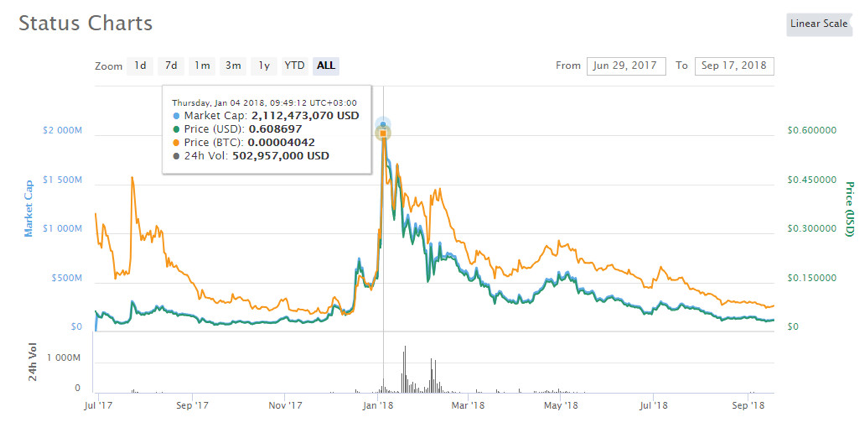
The Status Technology
As a decentralized ecosystem, Status allows the growth of the decentralized web, with a huge range of applications, including peer-to-peer payments and encrypted messaging for mobile users.
Status already supports a number of DApps, including the following:
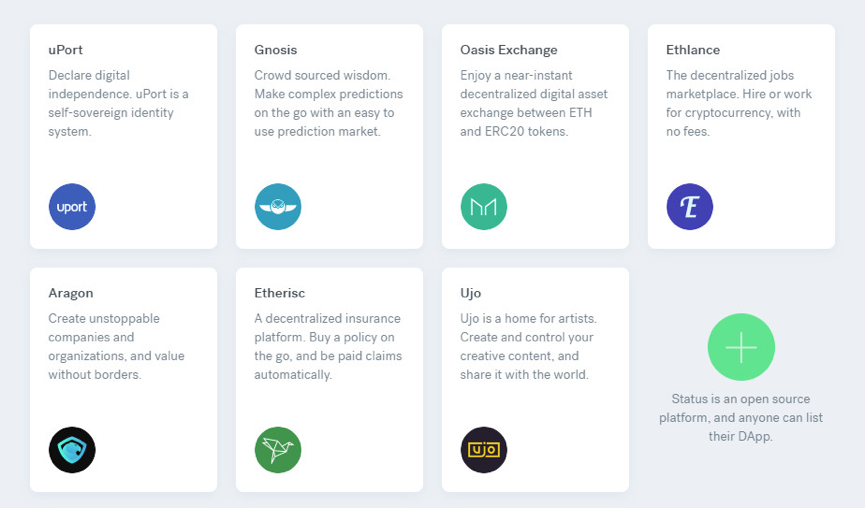
The Status technology has three main purposes:
- It allows users to send and receive encrypted messages, smart contracts and payments.
- It allows users the ability to search, chat, and interact with DApps and decentralized chatbots.
- It enables users to store and manage their cryptocurrency in the Status Hardware Wallet.
Decentralized Push Notification Market
Ethereum’s new communication subprotocol, Whisper (SHH), allows nodes to store messages while clients are offline. This offers a new market for push notification providers, who can charge for this service in SNT. Once this market is properly developed, competition will allow users to choose between established markets such as Google, and decentralized services for greater privacy.
For instance, a user in China has started paying for push notifications, only to realize that Google has been blocked in his country. With Status, the user can then switch to a different provider quickly and easily.
Governance
The SNT token allows stakeholders voting rights. Decision tokens are created for users to make decisions on proposals, which are based on the number of tokens each user currently holds. SNTs are not used to vote on proposals.
Tribute to Talk
Status’ mobile technology includes an anti-spam filter for receiving messages from new or unidentified users. The anti-spam filter will be set up by users determining the amount of SNT needed for a cold contact to send them a message. The deposit is returned if the user then replies to the message after it was sent.
For instance, by using this service an artist can set up a messaging service for his fans to contact him or her, enabling them to receive rewards while doing so.
The SNT Token
Status Network Token (SNT) is a utility token that powers the Status operating system. Users need SNT to use specific features. SNT is unique in that it enables the creation of new tokens with the same balance as the parent token for any given block number. As the platform continues to develop, more uses for SNT will be announced.
The allocation for SNT was as follows:
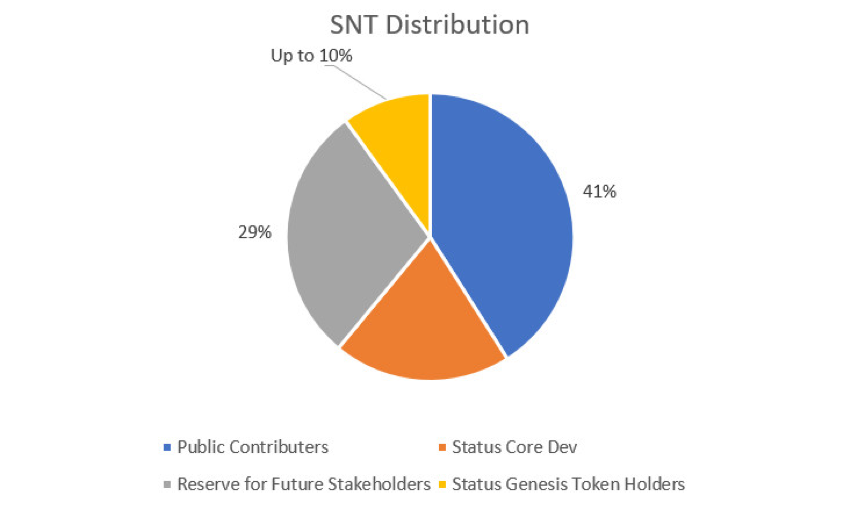
How to Purchase SNT
The main exchange for purchasing SNT is on Bithumb, which currently has the largest volume of the currency at almost $4 million. SNT can be traded on Bithumb for KRW.
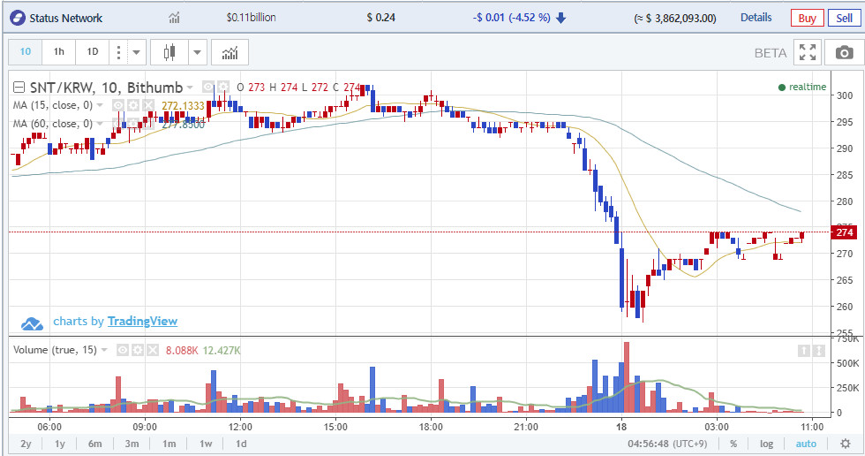
SNT is also available on the following exchanges:
- LATOKEN (Trade SNT with ETH on LATOKEN)
- Upbit (Trade SNT with KRW on Upbit)
- OKEx (Trade SNT with BTC on OKEx)
- OKEx (Trade SNT with USDT on OKEx)
- Binance (Trade SNT with BTC on Binance)
How to Store SNT
SNT can be stored in any wallet that supports ERC-20 tokens such as Coinomi, MetaMask and Myetherwallet.
For maximum security, however, you should store your SNT on hardware wallets such as Ledger Nano S and Trezor.
Status offers its own Hardwallet in which you can store, send and receive Ethereum and ERC-20 tokens. Since it is open-source, it can be customized to suit your individual programming requirements.
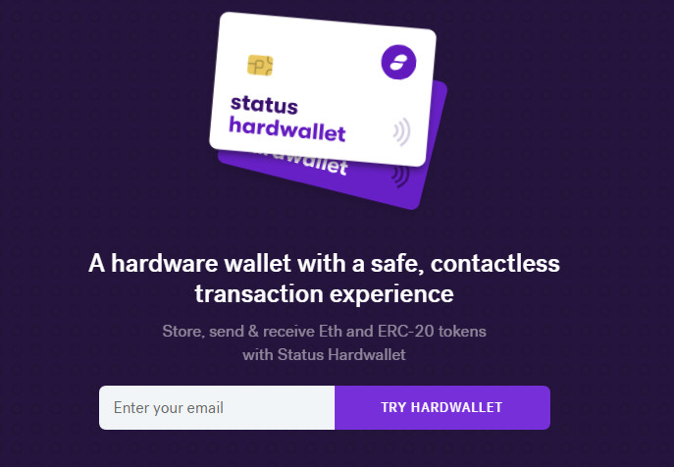
The Open Bounty Program
Although SNT is not mineable, you may be eligible to receive it through Status’ open bounty program.
Both developers and organizations can use the bounty program to earn or pay developers in any cryptocurrency of their choice.
Roadmap and Future Plans
Status does not currently have an official roadmap, but it announces development updates on its blog.
Instead, developing are using github to brainstorm ideas:
